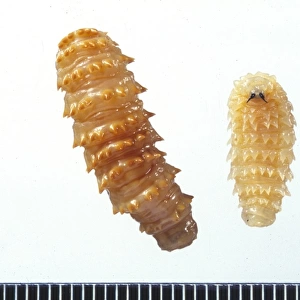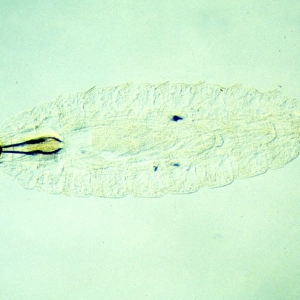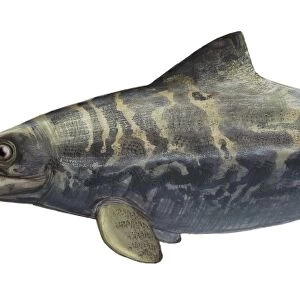Home > Animals > Insects > Hymenoptera > Related Images
Nematus ribesii, gooseberry sawfly larvae
![]()

Wall Art and Photo Gifts from Mary Evans Picture Library
Nematus ribesii, gooseberry sawfly larvae
These caterpillars feed voraciously on gooseberry leaves, red and white currant leaves. They display distinct black spots on their green bodies and can have up to three generations within one year
Mary Evans Picture Library makes available wonderful images created for people to enjoy over the centuries
Media ID 8581663
© Mary Evans Picture Library 2015 - https://copyrighthub.org/s0/hub1/creation/maryevans/MaryEvansPictureID/10709877
Arthropod Arthropoda Caterpillar Currant Eating Eudicot Feeding Gooseberry Hexapod Hexapoda Hymenoptera Insecta Larva Angiospermae Dicot Dicotyledon Grossulariaceae Invertebrata
EDITORS COMMENTS
1. Title: Gooseberry Sawfly Larvae (Nematus ribesii) Feeding Frenzy on Gooseberry Leaves Description: This photograph showcases a close-up view of gooseberry sawfly larvae (Nematus ribesii) in their element, voraciously feeding on the tender gooseberry leaves. The larvae, with their distinct black spots on a green body, display an intriguing contrast against the vibrant green foliage. These invertebrates are part of the Hymenoptera order, specifically the Sawflies family, and are common pests for gooseberries, red and white currants, and other related plants. Gooseberry sawflies have an impressive ability to produce up to three generations within a single year, making their impact on these plants significant. As herbivorous arthropods, they feed primarily during the daytime hours, causing noticeable damage to the leaves and potentially stunting the growth of the affected plants. The gooseberry sawfly larvae are an essential component of the ecosystem, contributing to the food chain as a food source for various predators and parasitoids. Their presence can be an indicator of a healthy ecosystem, as they are often found in association with flowering plants from the Dicotyledonae class, such as gooseberries, currants, and other members of the Grossulariaceae family. This photograph offers a unique glimpse into the intricate relationship between these invertebrates and their host plants, highlighting the intricacies of the natural world and the delicate balance between predators and prey. Keywords: animal, feeding, insect, invertebrate, arthropod, caterpillar, gooseberry, arthropoda, day, larva, insecta, angiosperm, hymenoptera, dicotyledon, dicot, flowering plant, insects, eudicot, angiospermae, currant, grossulariaceae, hexapoda, hexapod, daytime, eating, invertebrata, day time, common sawfly, gooseberry sawfly, gooseberry caterpillar.
MADE IN THE UK
Safe Shipping with 30 Day Money Back Guarantee
FREE PERSONALISATION*
We are proud to offer a range of customisation features including Personalised Captions, Color Filters and Picture Zoom Tools
SECURE PAYMENTS
We happily accept a wide range of payment options so you can pay for the things you need in the way that is most convenient for you
* Options may vary by product and licensing agreement. Zoomed Pictures can be adjusted in the Basket.




